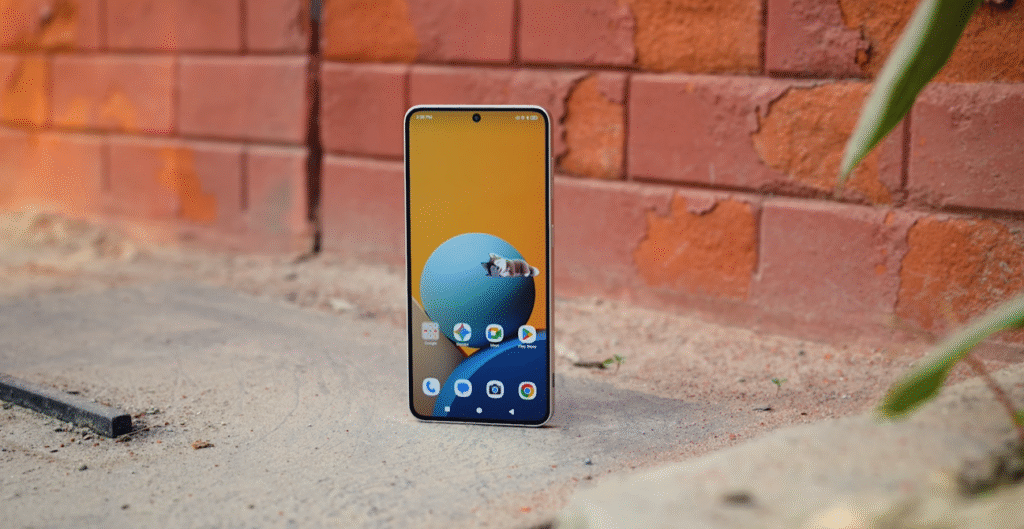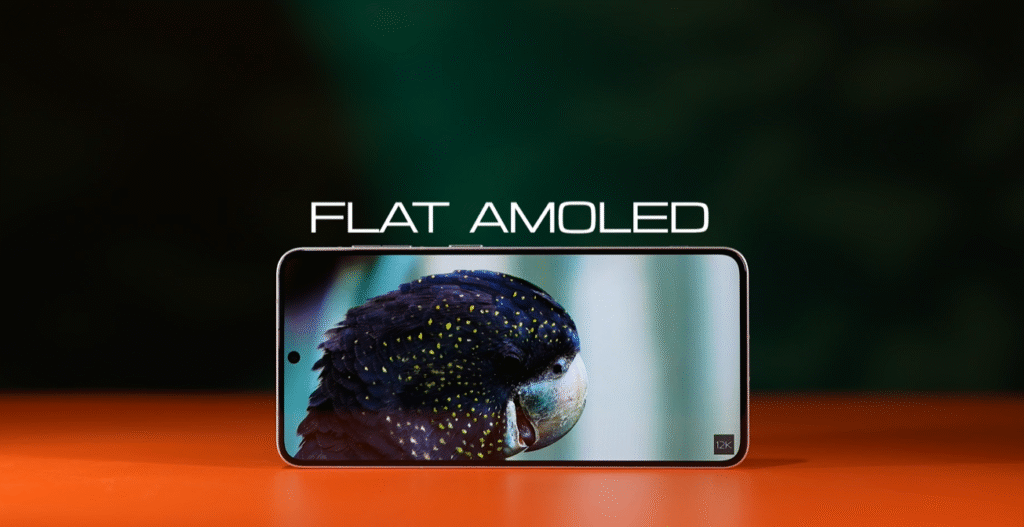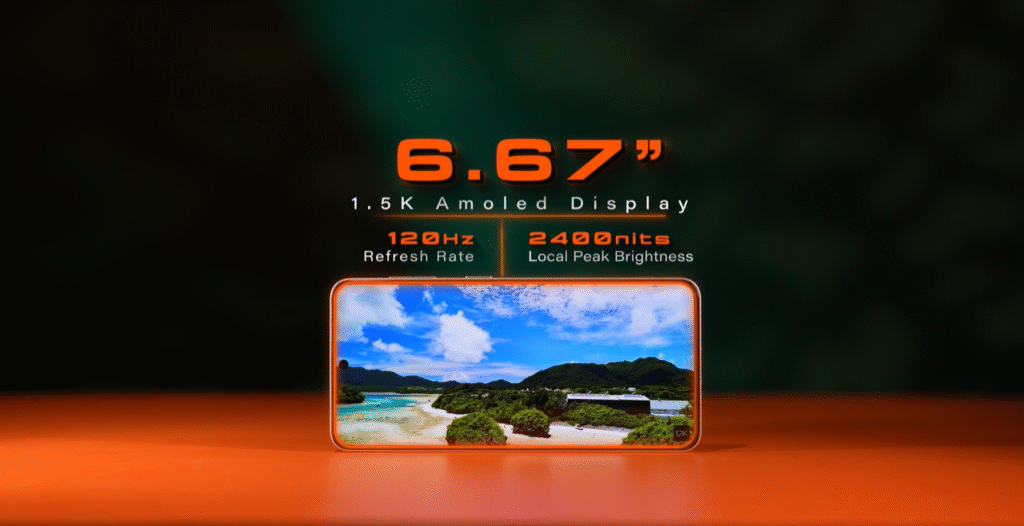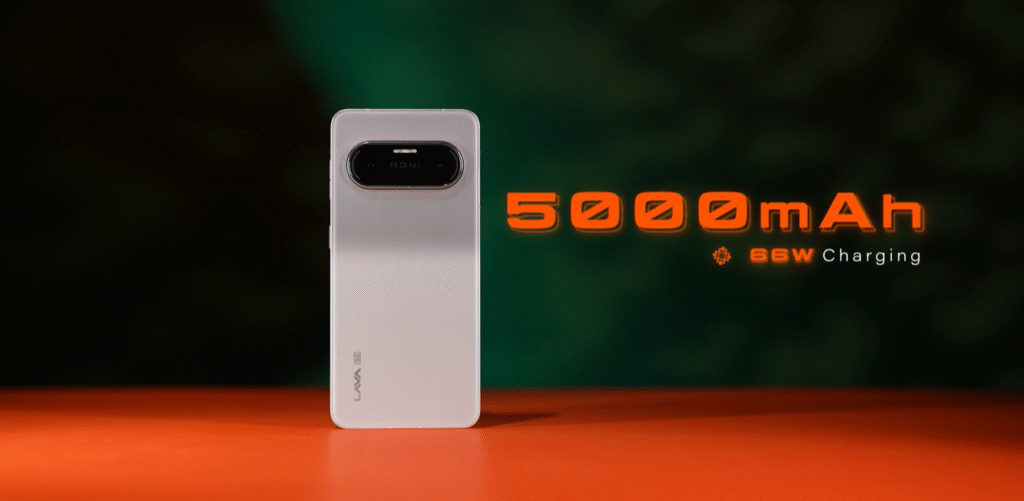2025 is the year Indian smartphone brands stopped being the punchline.
Lava just launched the Agni 4 simultaneously in India and London — the first time any homegrown brand has gone global with a mid-range phone at this price point. In a market dominated by Chinese giants that release 50+ phones a year, Lava has released just two flagships — Agni 3 last year and now Agni 4 — and both times, they listened, iterated, and improved dramatically.
This isn’t marketing fluff. I’ve been testing Lava phones since the Agni 2 Turbo days. Every year, they get noticeably better — better build, cleaner software, stronger performance, and now a genuine premium feel under ₹25K.
The Agni 4 arrives with:
- Aluminium alloy metal frame (first under ₹25K)
- Flat 1.5K 120 Hz AMOLED
- MediaTek Dimensity 8350 (1.3 million+ AnTuTu)
- UFS 4.0 + LPDDR5X storage/RAM combo
- Clean Android 15 with zero bloatware
- VayU AI — one of the most useful AI suites I’ve seen on any phone
- 66W charging, stereo speakers, IR blaster, IP64
At ₹24,999 (₹22,999 effective with bank offer), Lava isn’t trying to compete on paper specs alone. They’re trying to prove an Indian brand can build a phone that feels ₹35K–₹40K while costing half.
After 18 days of heavy use — Delhi metro commutes, London underground shoots, 4K vlogging, BGMI marathons, and daily driver duties — here’s the complete, brutally honest verdict.
Unboxing Experience: Premium From the First Touch
Packaging: Matte-black retail box with gold “Agni 4 5G” lettering and the proud “Proudly Indian” badge at the bottom. Inside, a sturdy plastic cradle holds everything securely — no flimsy cardboard here.
Box Contents
- Lava Agni 4 (Lunar Mist variant tested)
- 66W fast charger
- Type-C to Type-C cable (yes, both ends USB-C — rare under ₹30K)
- Decent-quality transparent TPU case
- SIM ejector tool
- Paperwork + unique “Free Home Service Card” (1-year doorstep replacement warranty — no one else offers this)
The inclusion of a proper 66W brick and Type-C to Type-C cable in 2025 deserves applause. Most brands have moved to charger-less boxes or cheap Type-A cables. Lava said no — and that tiny detail instantly makes the unboxing feel premium.
3. Design & Build Quality: Finally Premium at Under ₹25K
3.1 Materials & Finish The moment you pick it up — “metal frame” stops being a bullet point and becomes a feeling. Cool aluminium sides, perfectly chamfered edges, and a frosted glass back that doesn’t attract fingerprints like crazy. In Lunar Mist, the back has a subtle pearlescent shift under light — beautiful.



3.2 Design Language Lava ditched the giant square camera island of the Agni 3 for a clean pill-shaped module. The overall silhouette now looks mature, classy, almost OnePlus 13-lite from certain angles. Symmetrical 1.7 mm bezels and a centered punch-hole complete the modern look.
3.3 Ergonomics & Durability
- Weight: 200 g exactly (surprisingly light for metal + glass)
- Thickness: 8.2 mm
- IP64 dust & water resistance
- Gorilla Glass front
In hand, it feels dense and solid without being heavy. One-handed use is comfortable all day. After two accidental drops on Delhi marble floors (with the included case), zero damage. The metal frame gives confidence you don’t get with plastic mids.
Verdict: This is the first Lava phone that genuinely feels like ₹40K money. Design score — 9.5/10.
4. Display Review: A Surprisingly Strong 1.5K AMOLED
4.1 Specs
- 6.67-inch flat AMOLED
- 1.5K+ resolution (2712 × 1220)
- 120 Hz adaptive refresh
- 10-bit color, HDR10+ certified
- 2400 nits local peak brightness
- Gorilla Glass protection

4.2 Why Flat > Curved? Lava listened to feedback. Curved screens look premium in photos but cause accidental touches and are prone to cracks. The flat panel here is the right move — zero ghost touches, perfect palm rejection, and way better durability.
4.3 Real-World Tests
- YouTube 2160p HDR videos look stunning — deep blacks, punchy colors
- Outdoor visibility under harsh Delhi November sun — easily readable at 70–80 % brightness
- Colors are vibrant yet natural (slightly cooler tone than Samsung)
- 120 Hz scrolling is buttery smooth
- PWM dimming is high-frequency — no eye strain even after 4-hour Netflix sessions
This is comfortably one of the top 3 displays under ₹25K right now. Only the Nothing Phone (3a) Pro comes close.
5. Buttons, Ports & Physical Overview
5.1 Action Key New customizable button on the right side. Double-press, long-press — assign anything (screenshot, torch, camera, specific app). Instantly became my favorite feature.
5.2 IR Blaster Hidden on the top — control TVs, ACs, set-top boxes. Works flawlessly with Mi Remote app.
5.3 Ports & Layout
- Bottom: SIM tray (dual nano), mic, USB-C 3.2, speaker
- Top: Second speaker, IR blaster, noise-cancel mic
- No 3.5 mm jack, no microSD
5.4 Haptics X-axis linear motor — sharp, premium feedback. Typing feels satisfying.
6. Audio Performance
Dual stereo speakers tuned surprisingly well. Loud, clear, decent bass for the segment. Watching reels or PUBG footsteps — directional audio is good. Call quality is excellent — noise cancellation works even in crowded Delhi markets.
7. Camera Review: Good, But Not Class-Leading
7.1 Hardware
- 50 MP main (OIS)
- 8 MP ultra-wide
- 50 MP selfie (No telephoto — removed from Agni 3)


7.2 Daylight Performance Main camera produces pleasing, slightly saturated colors. Dynamic range is solid. Detail is sharp without being artificial.
7.3 Portrait & Selfies 50 MP selfie camera is excellent — natural skin tones, great detail. Portrait mode edge detection is 8.5/10. Slight reddish tint on some skin tones, minor oversharpening.
7.4 Low-Light & Night Mode Surprisingly strong. Night mode recovers shadows well, colors remain accurate, noise is controlled.
7.5 Video 4K 60 fps front & back with AIS stabilization. Footage is smooth, colors good. Dual-view video mode is fun for vloggers.
7.6 Verdict Camera is decent-to-good. Not Realme GT 7 or iQOO Neo 10 level, but miles ahead of last year’s Agni 3. Lava says software updates are coming — I believe them.
8. Performance Review: Huge Upgrade From Agni 3
8.1 Chipset & Benchmarks MediaTek Dimensity 8350 → 1.32 million AnTuTu Geekbench 6: 1399 single / 4300 multi 3DMark Wild Life Extreme stability: 81.3 % GPU score: 9554

8.2 Gaming BGMI: 60 fps locked on HDR + Extreme (no drops in 2-hour sessions) Genshin Impact: High settings 60 fps average 4300 mm² vapor chamber keeps temps under 42 °C
8.3 Storage & RAM LPDDR5X RAM + UFS 4.0 storage — app launch speeds are flagship-level. Multitasking 25+ apps — zero reloads.
This is the fastest phone under ₹30K right now. Period.
9. Software & UI Experience
Android 15 out of the box. Zero bloatware. 3 years OS updates + 4 years security patches promised.
VayU AI — The Real Highlight
- Maths Teacher AI (actually solves problems step-by-step)
- English Teacher AI
- Writing assistant (rewrite, translate, grammar)
- AI photo editor (cut-out, object removal, image expansion, sketch-to-art, text-to-image)
- AI call recording summary
These aren’t gimmicks — I used Maths AI to help my cousin with Class 10 trigonometry and it explained better than YouTube. Cleanest, most useful AI implementation under ₹50K.
10. Battery & Charging
5000 mAh + 66W → 7–8 hours SoT heavy use 0–50 % in 19 minutes Full charge in 48 minutes No wireless charging (expected)

11. Connectivity
14 5G bands, Wi-Fi 6, Bluetooth 5.4, USB-C 3.2 No NFC (biggest omission for some users)
12. Pricing & Variants
Only one variant: 8 GB + 256 GB → ₹24,999 ₹2,000 bank discount → ₹22,999 effective
Plus: Free doorstep replacement for 1 year + Demo-at-Home service across India.
13. Agni 4 vs Agni 3: What Changed?
Upgraded:
- Metal frame + premium design
- Flat 1.5K AMOLED
- Dimensity 8350 + UFS 4.0
- Better haptics & speakers
- VayU AI suite
- Cleaner software
Downgraded/Removed:
- Telephoto lens
- microSD slot
Net result: A significantly better daily driver.
14. Pros & Cons
Pros
- Premium metal + glass build
- Gorgeous flat 1.5K 120 Hz AMOLED
- Blazing Dimensity 8350 performance
- UFS 4.0 + LPDDR5X
- Clean Android 15 (zero bloat)
- Actually useful VayU AI
- Loud stereo speakers + IR blaster
- 66W charging + Type-C to Type-C cable
- Doorstep service + demo-at-home
- Insane value at ₹22,999
Cons
- Camera only “decent” (not segment-leading)
- No telephoto lens
- No microSD expansion
- No NFC
15. Final Verdict
The Lava Agni 4 isn’t perfect, but it’s the first Indian smartphone that genuinely feels like a proud, competitive global product.
At ₹22,999 effective, you’re getting:
- A phone that looks and feels ₹40K
- Performance that destroys most ₹35K phones
- The cleanest software experience in the segment
- AI features students and creators will actually use
- After-sales peace of mind no Chinese brand matches
Yes, the camera could be better. Yes, there’s no NFC. But everything else — design, display, performance, software, service — is executed at a level we’ve never seen from an Indian brand before.
If you want the absolute best camera under ₹25K → wait for Realme GT 7 If you want 90 fps gaming → iQOO Neo 10 But if you want the most complete, premium, clean, and proudly Indian package that punches way above its price — the Lava Agni 4 is the phone to buy in November 2025.
Final Rating: 9.2 / 10 Buy Recommendation: Strong Buy at ₹22,999 Best Indian smartphone ever made? Quite possibly.
Proud to carry this daily. Jai Hind 🇮🇳




[…] Agni 4 is good. It’s even great in places. But it’s not the “flagship-killer” Lava […]